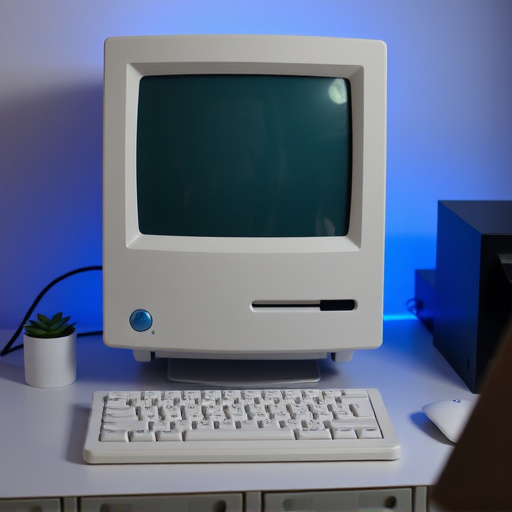When replacing your laptop battery, ensure compatibility by matching voltage, capacity, and chemistry with your model. Clean and inspect both old and new batteries for optimal performance and safety. Follow manufacturer guidelines for charging cycles to maximize battery lifespan. Regularly maintain your battery through temperature control, periodic discharge, and checks for damage. Dispose of old batteries responsibly at e-waste facilities to protect the environment.
Installing a new laptop battery is an essential yet often overlooked task, with potential pitfalls that can shorten your device’s lifespan. This article guides you through the top five mistakes to avoid when fitting a replacement laptop battery. From ensuring compatibility and proper cleaning to understanding charging cycles and responsible disposal, learn how to maximize your battery’s performance and longevity.
- Choosing the Wrong Battery Compatibility
- Failing to Clean and Inspect Before Installation
- Overlooking Proper Charging Cycles for New Battery
- Neglecting Regular Maintenance After Battery Replacement
- Not Disposing of Old Laptop Batteries Responsibly
Choosing the Wrong Battery Compatibility

Choosing the wrong replacement laptop battery can lead to serious issues, so it’s crucial to ensure compatibility before making a purchase. Not all laptop batteries are created equal; each model has specific requirements in terms of voltage, capacity, and chemistry. Using a battery that doesn’t match your laptop’s specifications can result in poor performance, reduced lifespan, or even safety hazards. Always check your laptop’s user manual or manufacturer website for the exact details on the required battery type.
Online retailers often make it easy to find replacement laptop batteries by providing compatibility charts and model-specific listings. Make sure you select a battery designed explicitly for your laptop model and avoid generic options that might not deliver optimal performance or safety standards. Verify the voltage, capacity (measured in mAh or Wh), and battery chemistry (e.g., Li-ion, NiMH) to ensure they align perfectly with your laptop’s needs.
Failing to Clean and Inspect Before Installation

Before installing a replacement laptop battery, it’s crucial to take a moment to clean and inspect both the old and new batteries. Accumulated dust, dirt, or debris can lead to poor contact and reduced performance. Use a soft, dry cloth to gently wipe down the battery terminals and the area where the battery will be inserted. Check for any visible damage, such as cracks, bulges, or leaking fluids, which could indicate a faulty battery and pose safety risks. Ensuring your work area is free from contaminants will contribute to a smoother installation process.
Overlooking Proper Charging Cycles for New Battery

When installing a new replacement laptop battery, one common mistake is overlooking the importance of proper charging cycles. New batteries require several initial charge and discharge cycles to reach their full capacity and optimize performance. Ignoring this crucial step can lead to inaccurate battery health readings and suboptimal battery life.
Always ensure your new laptop battery goes through the recommended charging routine, as per the manufacturer’s guidelines. This typically involves fully charging the battery, then discharging it to a certain level before recharging again. Proper cycling helps establish a reliable baseline for your laptop’s power management system, ensuring you get the most out of your replacement laptop battery.
Neglecting Regular Maintenance After Battery Replacement

After replacing your laptop battery, many users make the mistake of overlooking regular maintenance. This is a crucial step as it ensures the longevity and optimal performance of your new battery. A replacement laptop battery, while offering fresh energy, requires proper care to sustain its health over time. Users should aim to keep their batteries in good condition by avoiding extreme temperatures, fully charging and then allowing them to discharge naturally before storing for extended periods.
Neglecting these simple practices can lead to reduced battery life and performance degradation. Regular maintenance involves periodic checks to ensure there are no signs of physical damage or swelling, which could indicate an issue with the battery or its charger. By incorporating these care practices into your routine, you’ll be able to maximize the lifespan of your replacement laptop battery and maintain reliable power for your device.
Not Disposing of Old Laptop Batteries Responsibly

Many people often overlook the importance of proper disposal when it comes to old laptop batteries. With the constant need for newer, more powerful devices, it’s easy to accumulate used batteries and simply toss them aside. However, this can have significant environmental consequences. Old laptop batteries contain hazardous materials like lithium, nickel, and cadmium, which can leak out and contaminate soil and water sources if not handled correctly.
Responsibly disposing of your old replacement laptop battery is a crucial step in minimizing these risks. Many electronic waste facilities are equipped to handle such materials safely, ensuring that they are recycled or disposed of according to environmental standards. By taking the time to recycle your used batteries, you contribute to a more sustainable future and protect the planet from potential harm caused by toxic elements.
When installing a replacement laptop battery, avoid common pitfalls like incorrect compatibility, neglecting cleanliness and inspection, improper charging cycles, lack of post-replacement maintenance, and irresponsible disposal. These mistakes can shorten battery life or even pose safety risks. Remember to always verify battery compatibility with your laptop model, clean and inspect before installation, follow recommended charging cycles for new batteries, maintain regularly, and dispose old batteries responsibly to ensure optimal performance and environmental protection.
